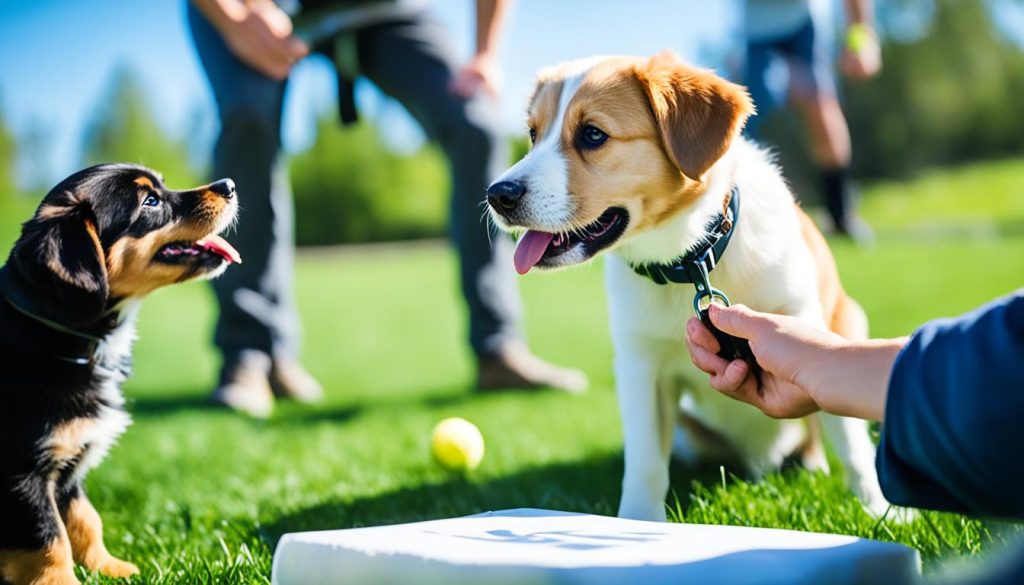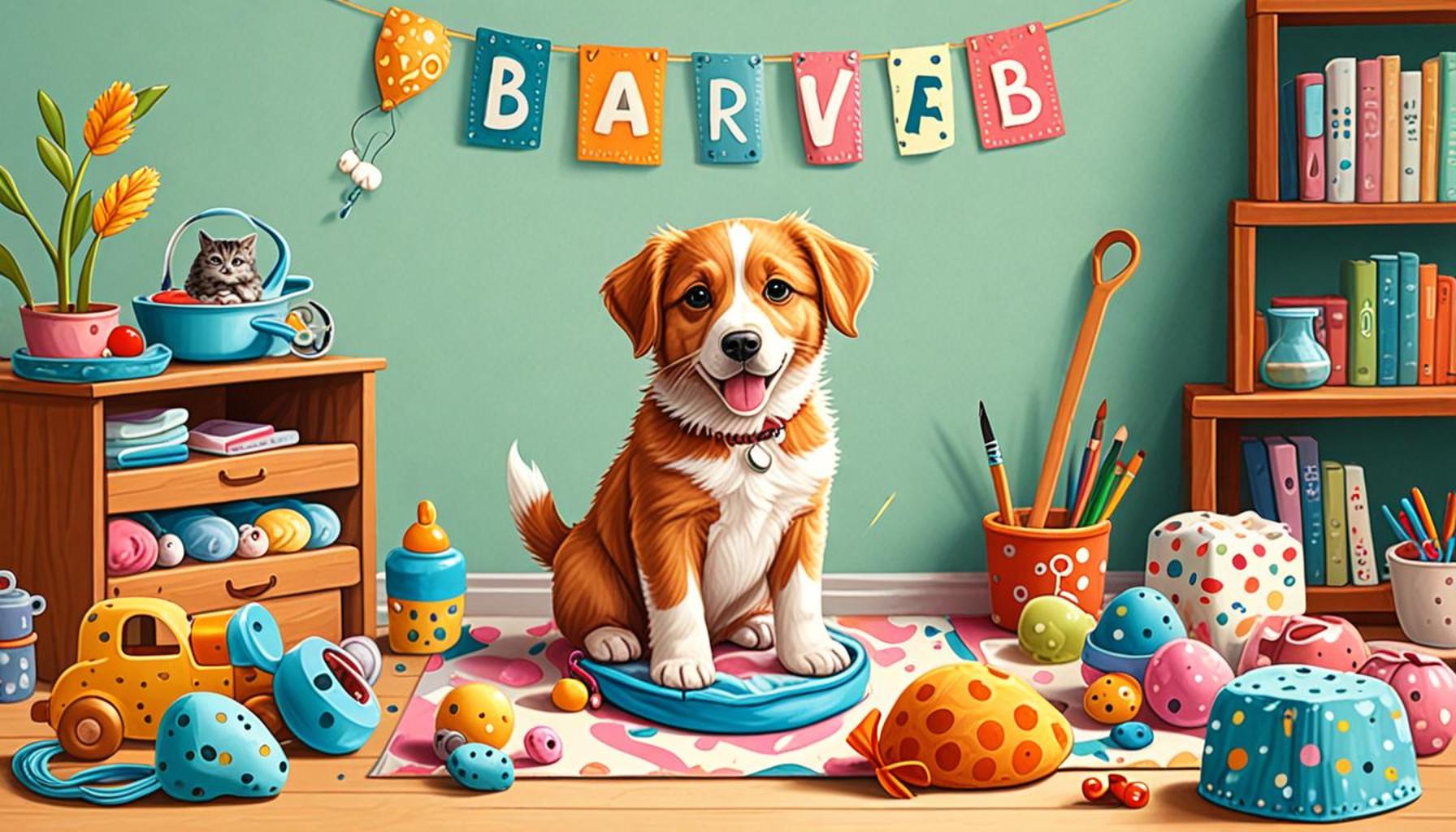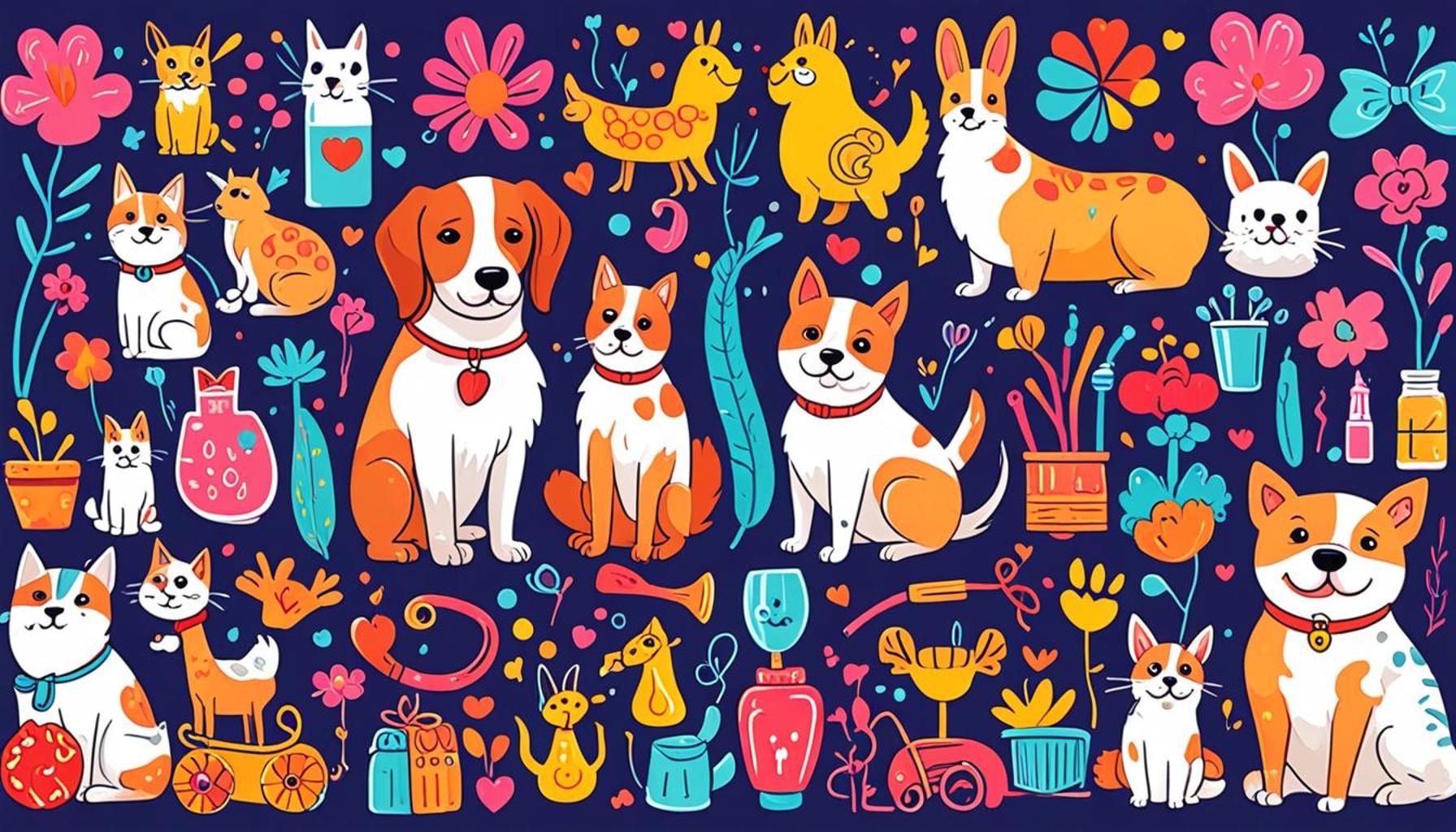Effective Home Dog Training Socialization Strategies for Success

Bringing a dog into your home is a joyous adventure, but it also comes with the responsibility of training and socializing your new companion. Effective training and socialization are crucial for fostering a well-adjusted and happy dog, enabling them to thrive in various environments and situations. Understanding the right strategies not only deepens the bond between you and your pet but also enhances their behavior and adaptability.
With an increasing number of pet owners seeking methods to enhance their dog’s behavior, it is essential to highlight key strategies that can lead to success. Implementing these practices can significantly improve your dog’s social skills, reduce anxiety, and prevent behavioral problems. Here are the top elements to consider:
- Positive Reinforcement Techniques
- Consistent Routine and Environment
- Engaging Socialization Opportunities
- Gradual Exposure to Different Environments
- Utilizing Interactive Training Tools
In the following sections, we will delve into these strategies, providing insights and practical tips that can make your dog training experience rewarding. Prepare to unlock the potential for a harmonious life with your furry friend!
DISCOVER MORE: Click here for stress-free RV travel tips with your pet
Top 5 Effective Strategies for Dog Training and Socialization at Home
Training and socializing your dog at home can be both an exciting and challenging journey. With the right strategies, you can create a harmonious environment for both your furry friend and your family. Healthier relationships between dogs and humans stem from proper training and socialization techniques. In this article, we will explore the top five effective strategies for dog training and socialization right in the comfort of your own home. Let’s dive in!

5. Utilize Positive Reinforcement
Positive reinforcement is a powerful tool in dog training. This method involves rewarding your dog for good behavior, making it more likely they will repeat that behavior in the future. Rewards can include treats, praise, or playtime. It’s essential to use rewards immediately after the desired behavior to establish a clear connection.
For example, if you teach your dog to sit, immediately give them a treat after they sit on command. The more consistent you are, the faster your dog will learn. This method not only builds trust but also strengthens your bond with your pet.
Tips for implementing positive reinforcement:
- Choose high-value treats to keep your dog motivated.
- Be consistent with commands and rewards.
- Use enthusiastic praise to encourage engagement.
Consider expanding rewards beyond treats as your dog becomes more adept. Introduce games like fetch or a favorite toy immediately after the desired behavior, catering to their interests. Demonstrating that good behavior leads to pleasurable outcomes enriches the training process and deepens your connection with your dog.
4. Create a Structured Routine
Dogs thrive on routine. Establishing a structured daily schedule that includes feeding, walks, playtime, and training sessions will help your dog feel more secure. When your pet knows what to expect, they become more relaxed and eager to learn.
Incorporate training sessions into your routine, making them short but frequent, ideally around 5 to 10 minutes several times a day. This approach helps keep your dog engaged and prevents boredom, which can lead to destructive behaviors. Keep the training environment free from distractions and gradually increase the challenges as your dog progresses. This structured approach can substantially contribute to effective learning.
Key elements to consider:
- Feed your dog at the same time every day.
- Consistency in walk times reinforces expectations.
- Block specific times for training each day.
Moreover, balancing the routine with variety ensures your dog’s world doesn’t become monotonous. Implement new commands intermittently or expose them to different environments during walks. Structured variety reinforces learned behavior in diverse settings while keeping the experience enriching and engaging.
3. Socialize Early and Often
Socialization is crucial for your dog’s development. Starting socialization early can prevent behavioral issues in adulthood. Expose your dog to various environments, sounds, people, and other animals while ensuring these experiences are positive.
Invite friends over or take your dog to pet-friendly places to meet new faces. Even using simple methods like allowing your dog to observe other dogs from a distance can help them adapt to social situations. Remember, the goal is to encourage positive associations with new experiences.
Effective socialization tips:
- Gradually introduce your dog to new experiences.
- Use treats and positive reinforcement during new encounters.
- Monitor your dog’s body language to ensure they are comfortable.
Start with less intimidating social interactions, escalating to more complex or crowded settings as your dog becomes more confident. Consistent exposure and patience can reduce anxiety, fostering a well-adjusted pet proficient in navigating everyday scenarios.
2. Leverage Various Training Techniques
Different training techniques can yield various results based on your dog’s personality. Incorporating a mix of methods like clicker training, leash training, and the “leave it” command can enhance your training sessions. Each method targets specific behaviors and reactions.
Clicker training involves using a click sound to indicate the exact moment your dog has performed the desired action. It’s a precise way to communicate, making it highly effective to teach complex commands. Leash training, on the other hand, focuses on teaching your dog how to walk nicely without pulling. This can lead to enjoyable walks for both parties.
Best practices for using various training techniques:
- Experiment with different methods to find what works for your dog.
- Be patient and allow your dog to learn at their own pace.
- Integrate multiple techniques for a well-rounded training approach.
Understanding your dog’s responses can guide you toward custom-tailored approaches, refining strategies to suit their unique needs. Overlapping techniques, like employing clicker training alongside verbal cues or hand signals, enrich their comprehension and engagement.
1. Develop Clear Communication
The foundation of effective dog training and socialization lies in clear communication. Dogs, like humans, need to understand what is expected of them. Use consistent cues, tones, and even body language to convey your messages. When your dog receives clear signals, they are more likely to respond positively.
Make sure to vary your rewards based on your dog’s development; for instance, as your dog becomes more proficient, lessen the treats and rely more on verbal praises. This approach signifies that they are progressing in their training. Ultimately, developing strong communication will ensure a smoother training process and create a trusting relationship with your furry friend.
Incorporate the consistent use of hand signals alongside verbal commands to enhance understanding. Exploring canine body language and signals will enable you to respond accurately to your dog’s state, from stress to excitement. This mutual understanding paves the way for a deeper bond and more efficient training process.
Adapting these strategies to fit your dog’s individual learning style and integrating them into all aspects of daily life can transform the at-home training experience. Commitment, understanding, and patience remain at the core, propelling a lifelong journey of companionship and growth.
| Category | Description |
|---|---|
| Positive Reinforcement Techniques | Using rewards such as treats, praise, or playtime to encourage desired behaviors in dogs. This method fosters a strong bond between the dog and the owner, making training a more enjoyable experience. |
| Routine and Structure | Establishing a consistent training schedule helps dogs learn when to expect training sessions and ensures they are mentally prepared, leading to better results. Routine minimizes stress and uncertainty for the dog. |
| Socialization Opportunities | Exposing dogs to various environments, sounds, and other animals can significantly reduce fear and anxiety. Techniques such as organized playdates or visits to pet-friendly locations greatly enhance a dog’s adaptability. |
| Mental Stimulation Activities | Incorporating puzzle toys, training games, and scent work challenges can stimulate a dog’s mind and prevent boredom. Mental exercise often translates into better-behaved pets, as they are less likely to engage in undesirable behaviors. |
Within the realm of effective training and socialization of dogs at home, the use of **positive reinforcement techniques** stands out as one of the most powerful strategies. This method not only promotes good behavior by rewarding positive actions but also nurtures a trusting relationship between the dog and owner. The key lies in timely rewards—whether they be treats, enthusiastic praise, or simple playtime—that encourage repetition of desired behaviors.Establishing **routine and structure** is equally critical. For dogs, predictability fosters a calmer living environment. Dogs thrive under consistent training schedules where they learn to anticipate training sessions. A well-defined routine not only aids in learning but also minimizes anxiety, as dogs feel secure and informed about what to expect throughout their day.Integration into the outside world through **socialization opportunities** is vital for a dog’s development. Engaging dogs in diverse experiences, such as meeting other friendly pets or visiting new locations, plays a crucial role in expanding their comfort zones. This exposure aids in eradicating fears and building confidence, equipping dogs with the skills necessary for adjusting to new situations.Lastly, the incorporation of **mental stimulation activities** in training routines can amplify results considerably. Engaging dogs with puzzle toys or training games can make learning fun while also providing essential mental exercise. A stimulated mind leads to a content dog, which naturally aligns with positive behaviors and less destructive tendencies. As a result, both the dog and owner experience a more harmonious living dynamic.
DISCOVER MORE: Click here for top pet entertainment ideas on flights
Frequently Asked Questions About Effective Strategies for Training and Socializing Dogs at Home
How can I effectively socialize my dog at home?
Socializing a dog at home involves exposing them to various stimuli and experiences in a controlled environment. Start by introducing your dog to different people, pets, and environments in short, positive sessions. Utilize treats and praises to reinforce good behavior. It’s crucial to monitor your dog’s reactions and be patient, as each dog adapts at their own pace. Ensure that all interactions are safe and relaxed to avoid any fear or aggression.
What are common mistakes to avoid during home dog training?
One common mistake is inconsistency in training methods and commands, which can confuse your dog. Another is relying excessively on punishment-based techniques, which can lead to anxiety or fear. Instead, focus on positive reinforcement. Remember to maintain patience and persistence—dogs thrive on routine and clear communication. It’s also important not to rush the learning process; every dog learns at a different rate.
Is it possible to train an older dog or should training start at puppyhood?
Training is beneficial at any age, so it’s definitely possible to train an older dog. While puppies may learn certain commands more quickly due to their developmental stage, older dogs can also learn new tricks and adapt to new environments with the right approach. The key is to use positive reinforcement tailored to the dog’s individual needs and to be patient. Every training session is an opportunity to strengthen your bond with your dog, regardless of their age.
How do I handle behavior problems such as barking or chewing?
Behavior problems can often be managed with consistent training and redirection. For barking, identify the trigger and remove it gradually or desensitize the dog through controlled exposure. Redirection to a toy or a command can be effective. To curb chewing, ensure your dog has appropriate chew toys and engage them in regular physical and mental activities to reduce boredom. It’s vital to understand the reason behind the behavior—such as anxiety, boredom, or lack of training—and address it accordingly.
DIVE DEEPER: Click here to learn how to keep your pet healthy during the holidays
Conclusion: Unlocking the Full Potential of Canine Companions
In conclusion, effective strategies for training and socializing dogs at home are essential components in nurturing well-adjusted, obedient, and happy pets. As explored throughout the article, the combination of establishing a consistent routine, employing positive reinforcement techniques, facilitating early socialization, utilizing clicker training, and setting clear boundaries ensures a comprehensive approach to raising a well-rounded canine.
Emphasis on consistent routine cannot be understated, as it helps dogs thrive in predictable environments. Meanwhile, positive reinforcement remains a cornerstone of effective training, rewarding desirable behaviors with treats, praise, and love. By socializing dogs early, owners create opportunities for their pets to become comfortable in diverse settings and with various stimuli, significantly reducing anxiety and potential behavioral problems.
The introduction of clicker training serves as an innovative method to precisely communicate desired actions, setting the stage for more advanced training techniques. Furthermore, the establishment of clear boundaries assists in fostering a respectful and harmonious relationship between dog and owner, minimizing conflicts and misunderstandings.
Overall, these strategies highlight the multifaceted approach necessary for successful dog training and socialization at home. Each of these components plays an integral role, individually and collectively, in shaping a well-behaved pet that seamlessly integrates into family life. By investing time and effort in these methods, dog owners are better equipped to unlock the full potential of their canine companions, ensuring their pets lead joyful and fulfilling lives. For those eager to delve deeper, exploring additional resources or seeking advice from experts can provide further insights into this fascinating and rewarding aspect of pet ownership.


